Health
Nigeria: UNICEF moves to end FGM in 5 states
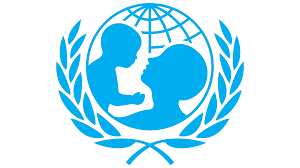
Nigeria: UNICEF moves to end FGM in 5 states
By: James Bwala
UNICEF is initiating a community-led movement to eliminate FGM in five Nigerian states where it is highly prevalent: Ebonyi, Ekiti, Imo, Osun and Oyo. Nearly 3 million girls and women would have undergone FGM in these States in the last five years.
The UN agency said today female genital mutilation is on the rise among Nigerian girls aged 0-14. Rates have risen from 16.9 per cent in 2013 to 19.2 per cent in 2018, a “worrying trend,” according to UNICEF.
A statement made available to NEWSng said Female genital mutilation (FGM) remains widespread in Nigeria. With an estimated 19.9 million survivors, Nigeria accounts for the third highest number of women and girls who have undergone FGM worldwide.
According to UNICEF, while the national prevalence of FGM among women in Nigeria aged 15-49 dropped from 25 per cent in 2013 to 20 per cent in 2018, prevalence among girls aged 0-14 increased from 16.9 per cent to 19.2 per cent in the same period, according to NDHS figures.
“An estimated 86 per cent of females were cut before the age of 5, while 8 per cent were cut between ages 5 and 14.
“As the world today commemorates the International Day of Zero Tolerance of FGM, 68 million girls worldwide were estimated to be at risk of female genital mutilation between 2015 and 2030. As COVID-19 continues to close schools and disrupt programmes that help protect girls from this harmful practice, an additional 2 million additional cases of FGM may occur over the next decade.
Also Read: 2023 General Election: Women group advocate gender equality
“Millions of girls are being robbed of their childhoods, health, education, and aspirations every day by harmful practices such as FGM,” said Peter Hawkins, UNICEF Representative in Nigeria.
“The practice of FGM not only has no health benefits – it is deeply harmful to girls and women, both physically and psychologically. It is a practice that has no place in our society today and must be ended, as many Nigerian communities have already pledged to do,” said Peter Hawkins.
The statement added that across Nigeria, disparities in the practice exist. State prevalence ranges from 62 per cent in Imo to less than 1 per cent in Adamawa and Gombe. The prevalence of FGM is highest in the South East (35 per cent) and South West (30 per cent) and lowest in the North East (6 per cent).
Nigeria: UNICEF moves to end FGM in 5 states
Health
UMTH wins the 2025 Public Tertiary Healthcare Facility of the Year Award.

UMTH wins the 2025 Public Tertiary Healthcare Facility of the Year Award.
By: Dr. James Bwala
The University of Maiduguri Teaching Hospital (UMTH) has once again demonstrated exceptional commitment to healthcare excellence by winning the 2025 Public Tertiary Healthcare Facility of the Year Award for the second time. This accolade underscores UMTH’s sustained efforts in providing high-quality medical services, advancing clinical research, and fostering an environment conducive to both patient care and academic development. Such recognition not only highlights the institution’s leadership within Nigeria’s healthcare sector but also reflects its pivotal role in addressing complex health challenges in the region.
This is a big congratulations to the CMD, Professor Ahmed Ahidjo, and his management team for another historic achievement. Winning this award consecutively signifies UMTH’s ability to maintain superior standards amidst evolving healthcare demands. The hospital’s integration of innovative treatment protocols and community-oriented outreach programs exemplifies best practices that contribute significantly to public health outcomes. As a teaching hospital, UMTH also plays a critical role in training future healthcare professionals, thereby ensuring a continuous supply of skilled practitioners dedicated to improving national health indices.
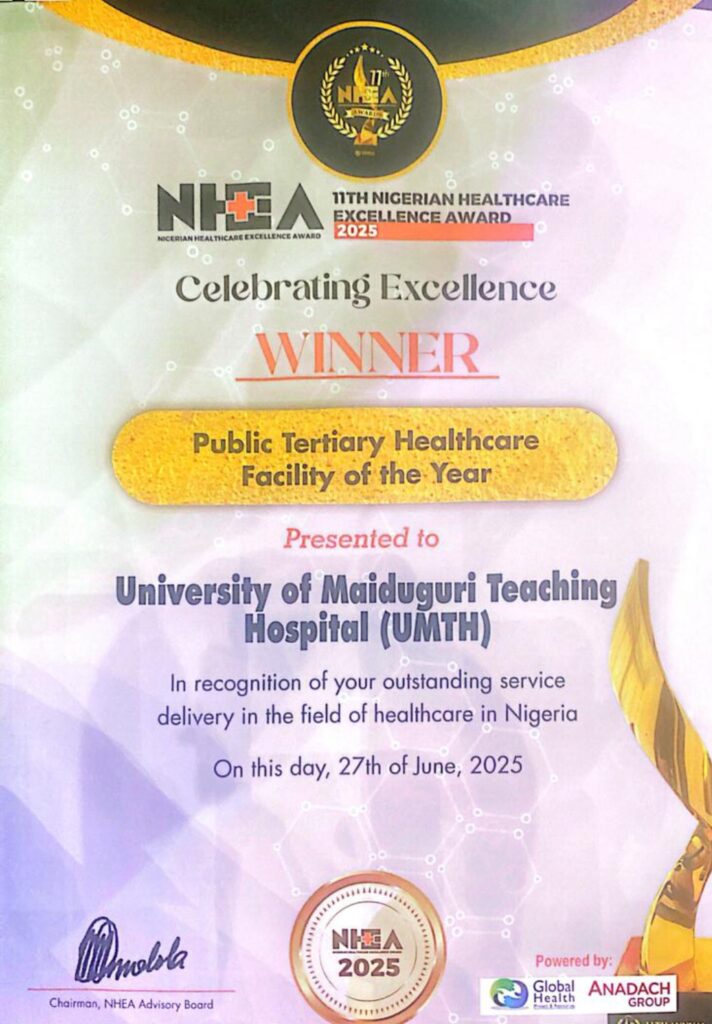
UMTH’s consecutive recognition as the top public tertiary healthcare facility reaffirms its status as a beacon of medical excellence and educational prowess in Nigeria. Maintaining such standards is essential for driving progress within the country’s healthcare infrastructure and enhancing patient care quality on a broader scale. UMTH’s strategic partnerships with global health organizations have facilitated the exchange of knowledge and resources, further enhancing its capacity to deliver cutting-edge healthcare solutions. This collaborative approach not only strengthens UMTH’s operational capabilities but also positions it as a model for other institutions aiming to elevate healthcare standards across the continent.
The hospital’s commitment to research and development has led to groundbreaking advancements in medical science, reinforcing its reputation as a leader in healthcare innovation and education. In addition, UMTH’s emphasis on patient-centered care has fostered an environment where individuals feel valued and heard. This patient-centered approach, combined with their ongoing commitment to excellence, underscores UMTH’s role as a pivotal institution in shaping the future of healthcare delivery in Africa.

The hospital’s investment in state-of-the-art technology and infrastructure has also played a vital role in its ability to provide high-quality care and respond effectively to the evolving needs of the community. This dedication to leveraging advanced medical technologies and maintaining a patient-first philosophy has undoubtedly contributed to UMTH’s recognition at the national level, securing its place as a beacon of excellence in the healthcare sector.
READ ALSO: https://newsng.ng/the-plight-of-farida/
Professor Ahmed Ahidjo, the CMD, has printed his foot on the sand of history as UMTH’s success story. This success story serves as a testament to the power of strategic vision and dedicated leadership in transforming healthcare services for better societal impact. This achievement not only highlights the hospital’s ongoing pursuit of healthcare excellence but also serves as an inspiring model for other institutions aiming to elevate their standards of care and operational efficiency.
The award not only acknowledges the exceptional service delivery and innovative practices at UMTH but also underscores the hospital’s role in setting a benchmark for healthcare quality and patient satisfaction across Nigeria. This recognition is a testament to the hospital’s commitment to continuous improvement and its ability to adapt to the evolving challenges in the healthcare sector. This accolade not only highlights their exceptional service delivery but also reinforces their position as a leader in medical innovation and education within the region.
This commendation reflects UMTH’s unwavering dedication to nurturing future healthcare leaders through robust educational programs and cutting-edge research initiatives. UMTH’s dedication to fostering an environment of continuous learning and adaptation has enabled it to remain at the forefront of healthcare innovation. The recognition further solidifies UMTH’s reputation as a pillar of healthcare excellence. The hospital’s strategic focus on integrating advanced technology with patient-centered care has been pivotal in achieving these remarkable milestones.
UMTH’s proactive approach in collaborating with international health organizations has also played a significant role in enhancing its service delivery and research capabilities. This collaborative effort not only enhances their clinical practices but also ensures that the hospital remains at the cutting edge of medical advancements and global health standards. This recognition is not only a testament to UMTH’s achievements but also a motivation to continue pushing the boundaries of what is possible in public healthcare.
* James Bwala, PhD, writes from Abuja.
UMTH wins the 2025 Public Tertiary Healthcare Facility of the Year Award.
Health
UMTH conducts successful kidney transplant 15 years after
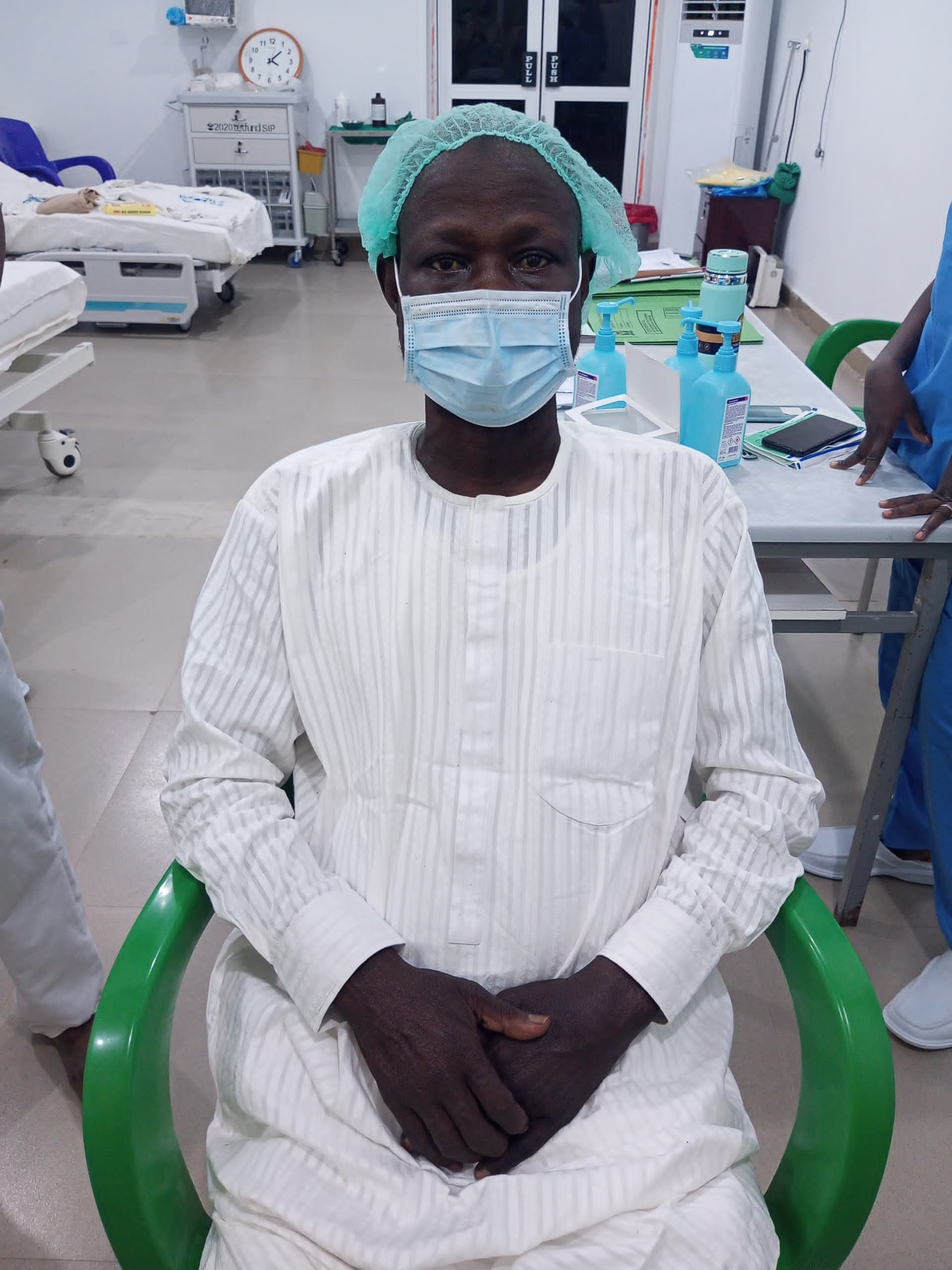
UMTH conducts successful kidney transplant 15 years after
….CMD calls for philanthropic support to enable the hospital save more lives from CKD
By: Sam Kayode
Chief Medical Director (CMD) of the University of Maiduguri Teaching Hospital (UMTH) Professor Ahmed Ahidjo has called on well-meaning individuals to sponsor kidney transplant against chronic kidney diseases (CKD)in the institution.
Professor Ahidjo made the appeal recently in a news conference in Maiduguri while announcing the successful transplant of kidneys to two patients in the hospital.
Speaking during the occasion at the UMTH Conference Hall, CMD, Professor Ahidjo, described the procedure as a landmark success attributable to the hospital’s preparedness, the support of management and the goodwill of an anonymous philanthropist who paid for the consumables.
He said that since kidney failure has become a serious challenge in the north east of Nigeria especially Borno, it is high time well meaning individuals who share in our common humanity support more transplants by bringing in their resources to bear so that more victims of CKD can continue to enjoy prolonged life from available transplants.
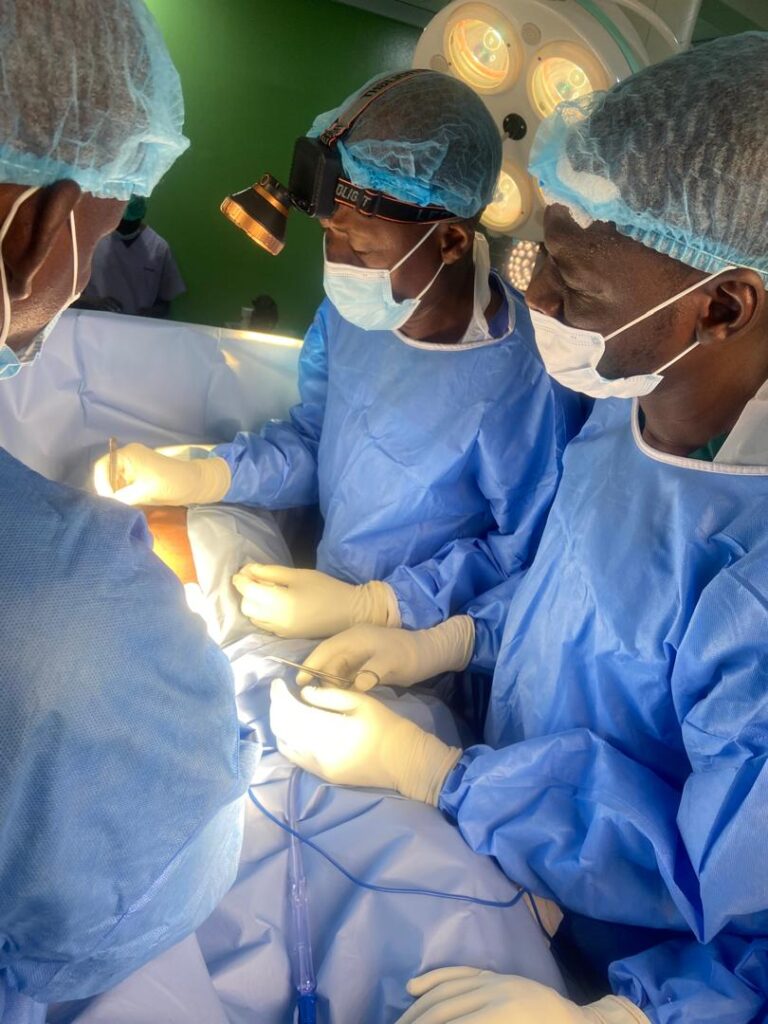
Ahidjo hinted that five million naira was paid by an anonymous donor for each of the patients who got a new kidney in the recent operation and that to him is his expectations towards this challenge because a transplant ordinarily costs about N13.5m to execute successfully in contemporary Nigeria.
The CMD noted that kidney challenges will no longer be a death sentence if there is a pool of consumables to support each operation which would be done virtually free by the UMTH medical team as a way of lessening the prevalence burden in the state.
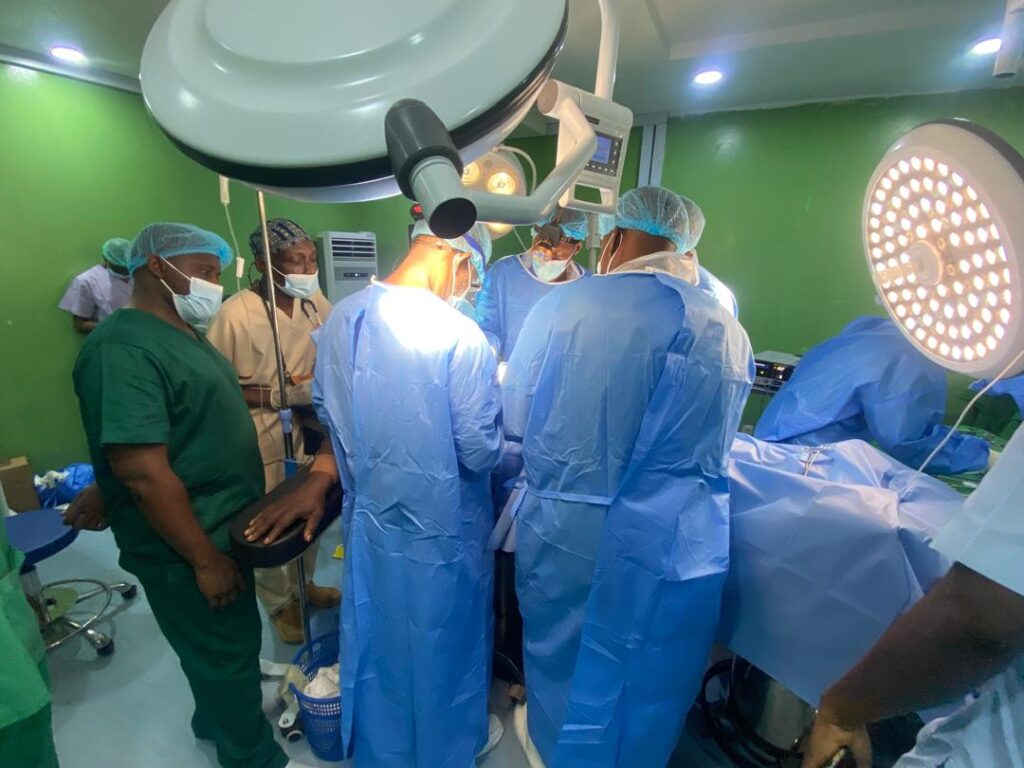
Responding to questions by reporters the CMD added that the hospital is ready to conduct free operations for the next 20 patients who desire new kidneys adding that the only challenge for such operations is ‘consumables” but once that is on ground the rest would be history.
” As an institution, we are ready for the next 20 patients because we are footing the bill of all the technical details but the consumables are quite expensive. This is why I am appealing for sponsorship of more patients at least to the level of being stabilized because the bulk of the charges we make are for the consumables and these are subject to a revolving fund to ensure that others on the waiting list get the same quality service.
” Donors should come out and support this cause as quickly as possible because so many patients have end stage kidney problems but they do not have the resources to get the care they need. And this is why we need the support of fellow Nigerians out there to keep them alive.” Said the CMD.
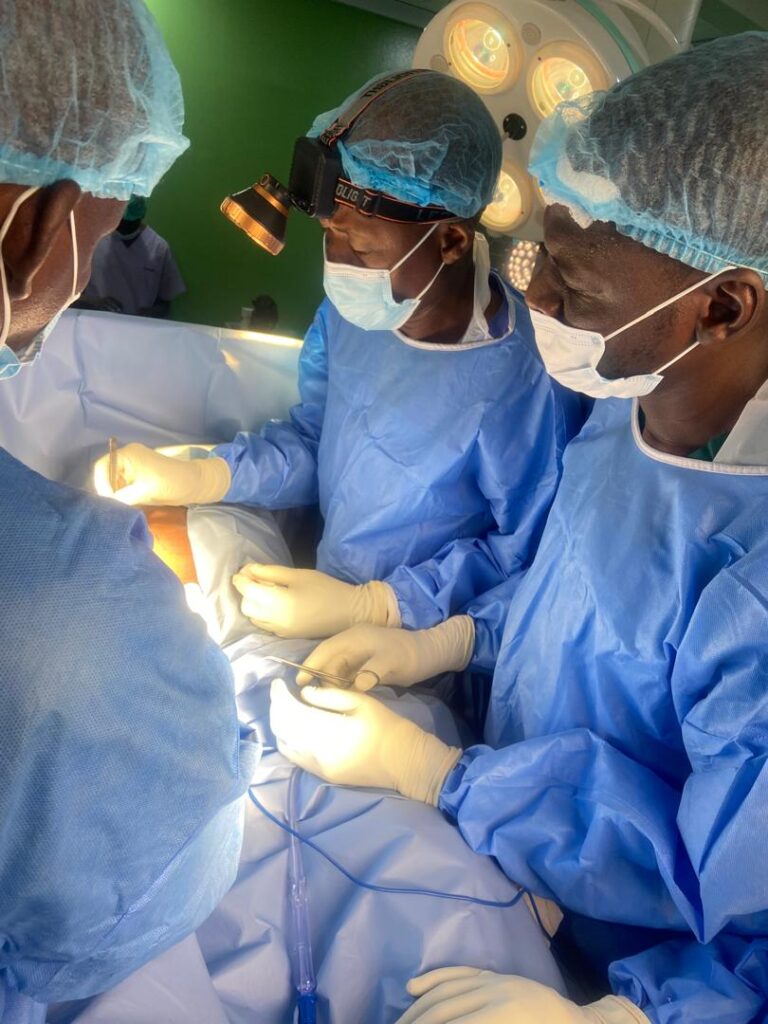
The UMTH he maintained has successfully reinforced its reputation by conducting the cheapest kidney transplants after 15 years indicative of the fact that it is now the leading renal treatment center in Nigeria today.
Roll call of successful transplant
Several specialists involved in the operation led by neurologist Dr. Hassan Gogo and the surgical team carried out the transplants and they include, Professors Umate, the lead Nephrologist, Sani Alhassan a Surgeon, lbrahim Gaidam, Fela Usman, and Dr Hassan Digo all of them Urologists.
Team of Anesthetics include: Ahmed Alhaji, Doctors’ kullma Zakana, Hadiza Bako, Bukar Ahmad, Aisami mustapha, Buhani Ghidie and Atiku.
Nephrology Nurses include, Yagana kingi, Maryam Alhassan, Babagana Gubio, Yagana Mohammed and Abubakar.
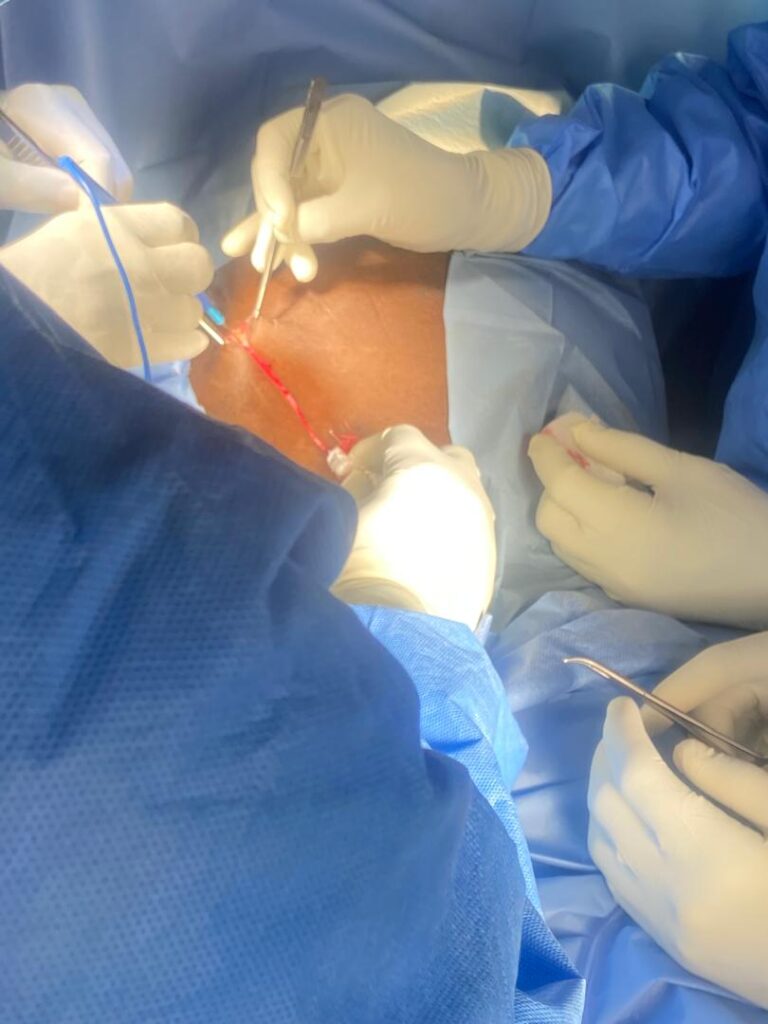
Perioperative nurses present in the operation were, Babagana Korede, Kamsulum Umate, Christiana Michael, Kolo Bulama, Bola Ayeni, Amina Tamus and Zainab Mohammed.
Technicians include: Abubakar Umar, Shettima Maryam and Abdullahi lawan while two porters Aisha Idi and Fah ibrahiin were among the team that
conducted the Surgery
Professor Mohammed Gadam, Dr. Ahmed Head of the Anaesthesia Unit Dr. Zanna, and Professor Sani Alhaji Hassan. Prof Haruna Ngaddah Consultant Anatomic Pathology and Forensic Medicine was the Lab team lead.
“This is not the first time UMTH has performed a kidney transplant. Our first was in August 2010. So you can see that with improved capacity and technology, we’ve resumed the procedures in full and ready to do many more,” said Prof. Ahidjo.
UMTH kidney centre
Ahidjo an interventional radiologist hinted that the UMTH hosts the largest kidney centre in Nigeria, with an 85 bed capacity and four operating theatres equipped with advanced surgical equipment like endoscopic cameras, and modern lighting systems.
Narrating further the latest developments in the kidney centre, Prof Ahidjo, stated that the hospital now has over 20 functional dialysis machines and an “independent renal laboratory centre” making it easy for patients to have what they need as at when due and reducing the burden of red tape of the main hospital laboratory.
He commended the Federal Government for subsidizing kidney dialysis, adding that UMTH now offers dialysis for just twelve thousand Naira per session roughly eight United States dollars making it one of the cheapest rate in the country.
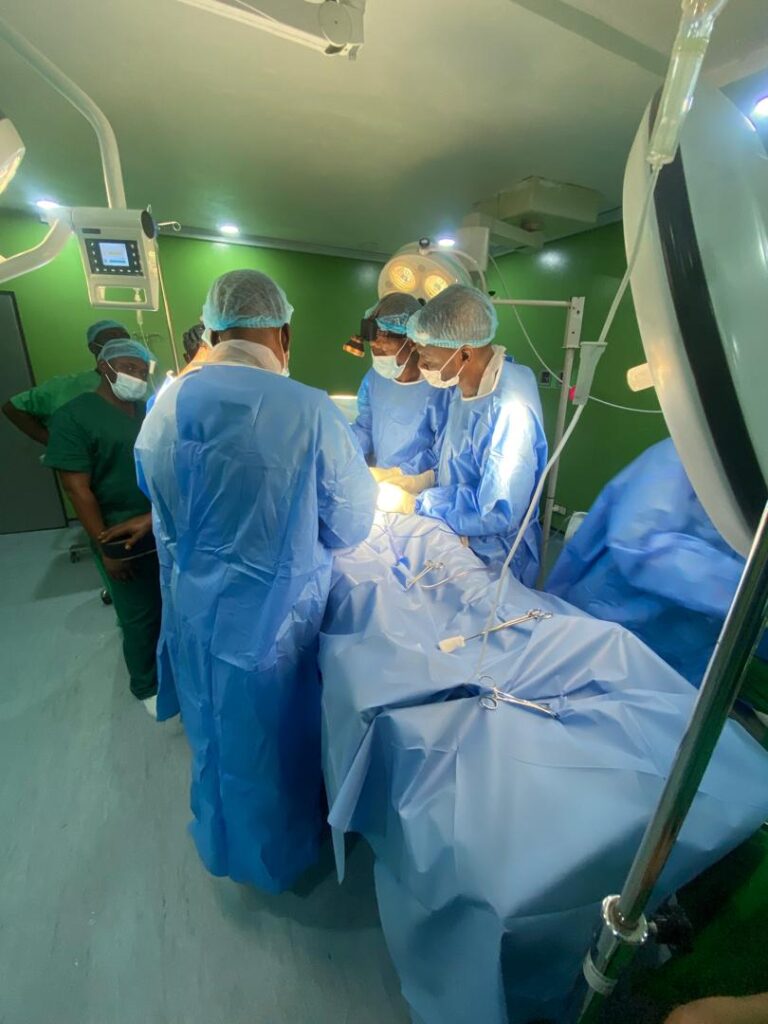
“In Nigeria and other parts of the world, dialysis cost as much as $1,000 per session but the support we receive makes this possible as we meet the needs of the people of the sub region.
“The cost of the service doesn’t even cover maintenance of the machines, but we are determined to keep our services accessible to the public,” he said.
The CMD commended Vice President Kashim Shettima for initiating the subsidized kidney dialysis program in Borno and reaffirmed that UMTH will continue to serve humanity in this manner.
Borno state sponsored Kidney research
The CMD lauded Governor Babagana Zulum of Borno state for providing a special grant of ₦50 million to the hospital for onward investigation of causes of Kidney failures in Borno State.
The research has been going on simultaneously but even though the results have not been officially released, the research on kidney failure in Borno State indicates a significant burden of CKD with hypertension and glomerulonephritis being major contributing factors.
Checks on a source who commented about the ongoing study of the prevalence of CKD in Maiduguri hinted
that the researchers found out that a substantial percentage of patients on dialysis so far had CKD of unknown cause.
Prof. Ahidjo while responding to a question on CKD however hinted that diabetes and hypertension were equally major contributors to kidney malfunctions in the region.
He maintained that samples already taken are being analyzed to determine specific regional causes, while urging the public to adopt healthier lifestyles, stay hydrated, and engage in regular physical activity to reduce risks.
Prevalence of high CKD has been noticed specifically in central and southern Borno but the research is yet to establish if it has anything to do with the water consumed or the general lifestyle of the residents of this region of the state.
UMTH conducts successful kidney transplant 15 years after
Health
‘We are no longer afraid’: MSF hands over Lassa fever care in Ebonyi State
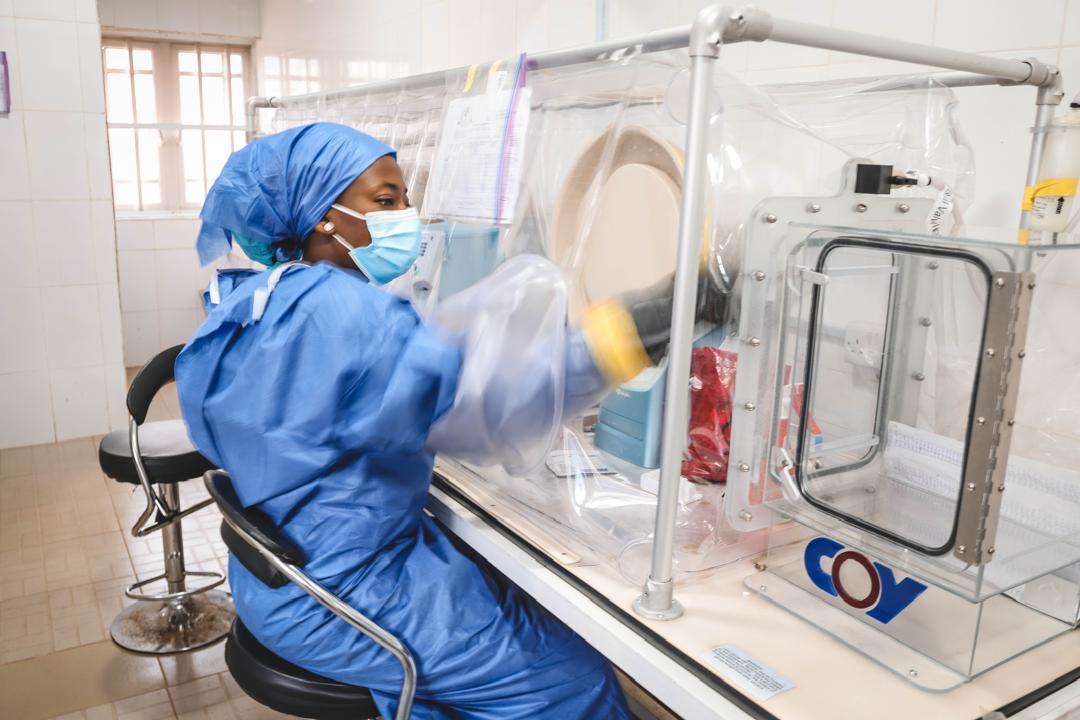
‘We are no longer afraid’: MSF hands over Lassa fever care in Ebonyi State
By: Michael Mike
Abuja, 18th June- After seven years of critical support from Médecins Sans Frontières (MSF), local health authorities in Ebonyi State are now well equipped to take on Lassa fever with improved infrastructure, training, and resilience—saving lives and restoring confidence in the healthcare system.
In early 2018, Ebonyi State in southeastern Nigeria faced a serious public health concern. Lassa fever – a potentially deadly viral haemorrhagic neglected tropical disease – recorded a particularly high seasonal outbreak, with a much larger number of cases, overwhelming hospitals and claiming numerous lives, notably among healthcare workers, particularly exposed to infection risks.
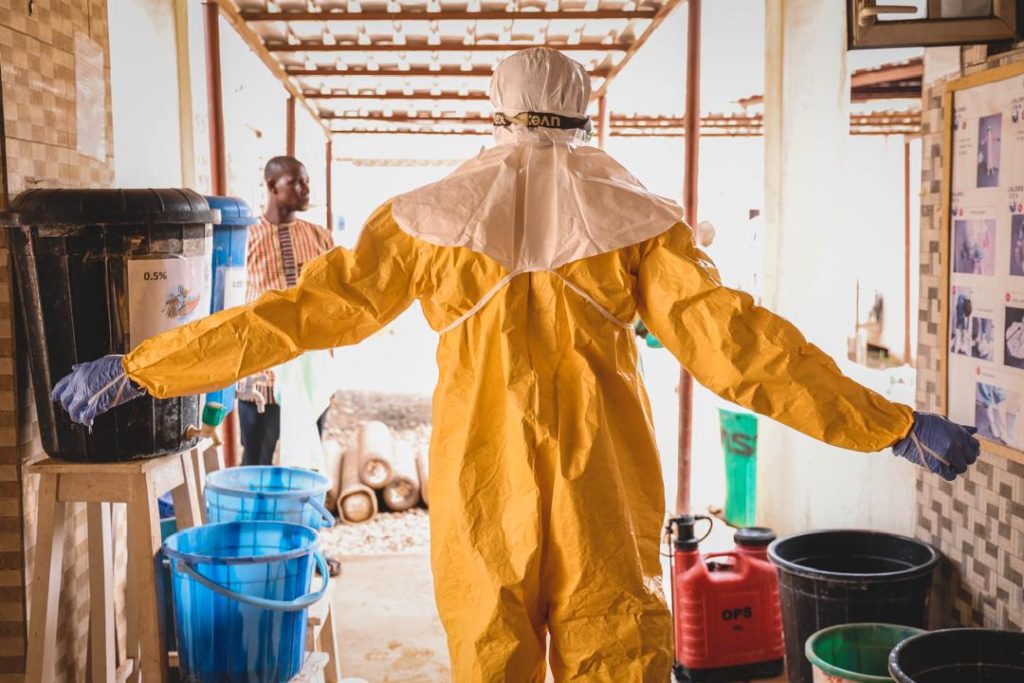
“We lost doctors, nurses, and cleaners,” recalled Dr. Nnennaya Anthony Ajayi, then head of clinical services at the virology unit of the Alex Ekwueme Federal University Teaching Hospital Abakaliki (AE-FUTHA), the state’s main referral centre. “There was panic. In the hospital, 16 healthcare workers passed away. People were afraid to go near the emergency room.”
Though the federal and state governments had already made strides—building an isolation ward and setting up a virology lab—AE-FUTHA was not prepared for the outbreak’s scale. Personal protective equipment (PPE) was scarce. Infection control procedures were unclear. Samples had to be sent to distant labs for confirmation. Suspected patients were sometimes kept in open spaces, and the risks for staff were devastating.
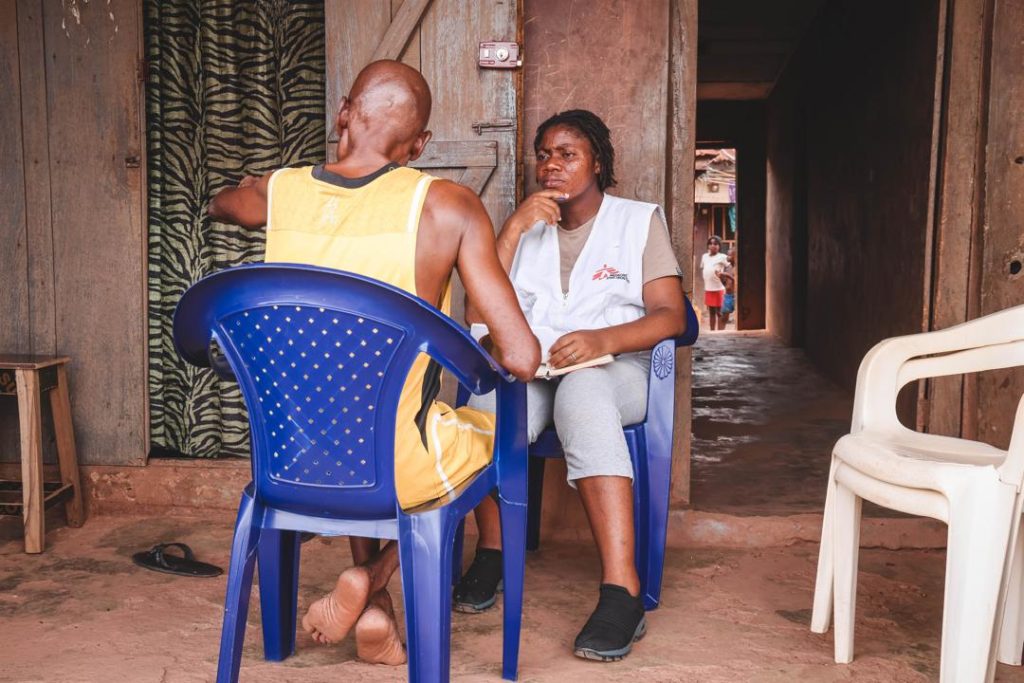
It’s in that context that MSF, also known as Doctors Without Borders, arrived in Abakaliki to support the response. What began as an emergency intervention soon evolved into a seven-year partnership with the Ebonyi State Ministry of Health, laying the groundwork for sustainable, locally led Lassa fever care.
Protect Health Workers, Improve Care for Patients
From the outset, MSF’s top priority was clear: stop the loss of healthcare workers.
“We had to put an end to this series of avoidable deaths,” said Alain-Godefroid Ndikundavyi, MSF’s most recent project coordinator in Ebonyi. “Our main objective was to reverse that trend and to reinforce the hospital’s capacity to better receive and treat patients with the disease.”
MSF’s intervention was wide-ranging. The organisation built triage and observation areas, distributed PPE, implemented robust infection prevention and control (IPC) systems, and trained local staff to manage Lassa cases safely and effectively.
“They helped us structure patient flow, IPC and biosafety measures, and provided what we needed to work safely,” said Dr. Ajayi. “They brought structure, training, and most importantly, hope.”
In total, over 230 training sessions for healthcare workers were delivered, and laboratory capacity was strengthened, enabling faster diagnosis. Eventually, a new model of care was put in place to deal with the disease, protect staff, and better support patients.
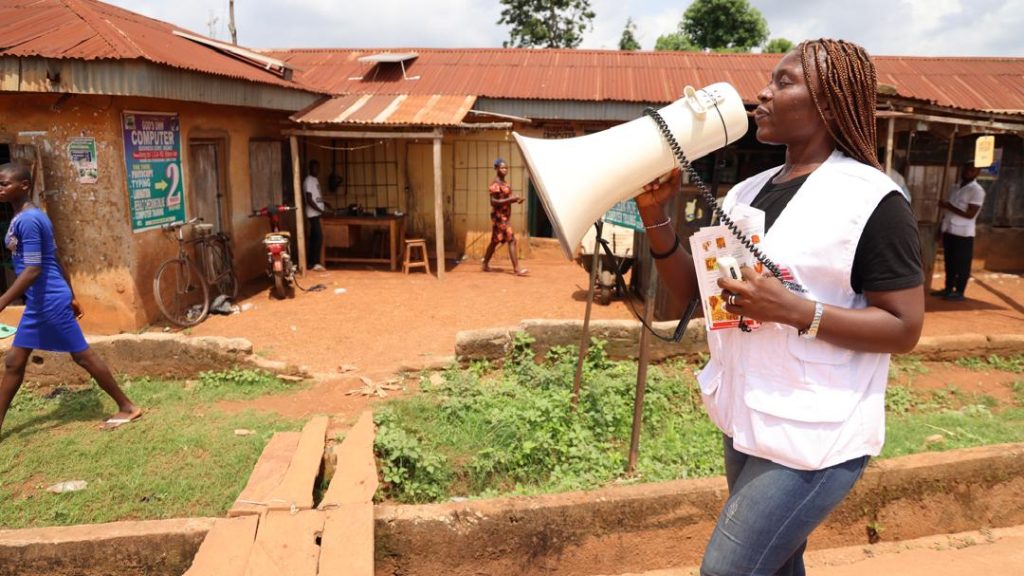
Between 2018 and 2024, MSF supported the treatment of 1,701 suspected and 427 confirmed Lassa fever cases. MSF also paid the full cost of patient care—including dialysis, medications, and meals—which significantly reduced fatalities.
Crucially, deaths among healthcare workers fell dramatically, with many years passing without a single death being recorded.
Reaching Beyond the Hospital
But MSF understood that stopping Lassa fever required action far beyond hospital walls. The disease thrives in communities where public health awareness is low and early detection is lacking.
“To bridge that gap, we mobilised health promotion teams that conducted over 4,500 education sessions and nearly 1,300 community visits across Ebonyi State,” said Ndikundavyi. “These efforts demystified the disease, corrected misconceptions, and encouraged early care-seeking behaviour.”
MSF also supported two primary healthcare centres in rural areas—Izzi Unuhu and Onuebonyi—providing training, lab equipment, medical supplies, and even building water towers to ensure safe sanitation. The goal was to catch Lassa fever early and ease the burden on AE-FUTHA.
“We realised that to truly fight Lassa, the response had to start at the community level,” said Ndikundavyi.
A New Chapter
In 2025, MSF formally handed over operations to the Ebonyi State Ministry of Health and AE-FUTHA. This transition was carefully planned and included donations of medical equipment, ambulances, and waste management tools. Enough supplies were provided to last through the next Lassa fever peak season.
“We officially handed over management responsibilities at the end of 2024 but kept an observational team on until March of this year, in case the Ministry needed additional resources,” Ndikundavyi said.
MSF also supported the creation of internal committees within AE-FUTHA to maintain standards in infection control, patient care, and outbreak response—ensuring that progress would continue after their departure. More broadly, MSF experts partnered with the Nigeria Centre for Disease Control and Prevention (NCDC), state and federal authorities to improve detection, prevention, and medical care guidelines.
Today, AE-FUTHA is a different place. Gone are the days of improvised gear and terrified staff. Healthcare workers now operate with confidence, knowledge, and access to proper equipment. Patients are treated with dignity, and survivors return home with hope. Not as outcasts, but as symbols of resilience.
The fight against Lassa fever is not over. In 2024 alone, 24 confirmed cases were recorded in AE-FUTHA, with one death among the hospital staff—still tragic, but a far cry from what happened in 2018, when 16 healthcare workers alone were lost.
“We are no longer afraid,” Dr. Ajayi said. “MSF helped us believe that we could fight Lassa fever—and win.”
‘We are no longer afraid’: MSF hands over Lassa fever care in Ebonyi State
-

 News1 year ago
News1 year agoRoger Federer’s Shock as DNA Results Reveal Myla and Charlene Are Not His Biological Children
-

 Opinions3 years ago
Opinions3 years agoTHE PLIGHT OF FARIDA
-

 Opinions4 years ago
Opinions4 years agoPOLICE CHARGE ROOMS, A MINTING PRESS
-

 News1 year ago
News1 year agoEYN: Rev. Billi, Distortion of History, and The Living Tamarind Tree
-

 Columns1 year ago
Columns1 year agoArmy University Biu: There is certain interest, but certainly not from Borno.
-

 ACADEMICS1 year ago
ACADEMICS1 year agoA History of Biu” (2015) and The Lingering Bura-Pabir Question (1)
-

 Opinions1 year ago
Opinions1 year agoTinubu,Shettima: The epidemic of economic, insecurity in Nigeria
-

 Politics3 weeks ago
Politics3 weeks ago2027: Why Hon. Midala Balami Must Go, as Youths in Hawul and Asikira/Uba Federal Constituency Reject ₦500,000 as Sallah Gift





